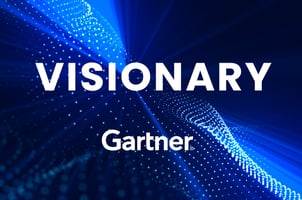This May Not Be As Hard As We Thought! Bespin Global Customers Discover New Migration Paths from VMware

Bespin Global Customers Discover New Migration Paths from VMware
"If I Could Wave A Magic Wand..."
"If I could wave a magic wand and move all my applications to the cloud, I would..." says the CTO of one of our best customers, a digital healthcare platform. We hear this all the time at Bespin Global, where we specialize in helping clients move from on-premises data centers to the cloud.
Last week we talked about our customers who were impacted by the Broadcom acquisition of VMware and saw their data center costs go up 500% or more. What’s preventing these workloads from exiting VMware and moving to cloud-native infrastructure?
“But It’s Not That Simple.”
Our customers tend to be fairly savvy when it comes to IT. The cloud has been around for years, and veteran IT leaders typically adopt a cloud-first technology strategy. But according to a Synergy Research report, 63% of digital workloads are still running in either on-premises or co-located data centers.1 So what is keeping the majority of applications from migrating to the cloud? Here are the most common obstacles that we’re seeing:
Dependencies
When you’ve been running a business for decades, there’s going to be some piece of technology in the chain that is simply a huge pain to modernize:
- Applications that were written on an old deprecated operating system or coded in a legacy programming language.
- Datasets running on massive, expensive SANs (storage-area networks) or even mainframe systems.
- Unknown technical debt, as in the case with a business that acquired or merged with a technology operation they didn’t build, and don’t have good documentation on which pieces could bring the whole system down.
Speed
Time means contract renewals, and contract renewals mean expense. So the more time it will take to migrate, the more “double bubble” costs finance departments will expect for running the datacenter and the cloud at the same time. The near-zero warning most CFOs received about the Broadcom pricing changes doesn’t help. Although the increased data center costs make migration more financially attractive, they still add to the short-term financial impact of running a migration while paying for existing VMware licensing.
Bandwidth
Ideally, your company already has:
- A traditional infrastructure team that is proficient in running the current data center
- A team that can build and operate a new system on a hyperscale cloud
- An application team capable of migrating all workloads
- Buy-in from InfoSec and finance to ensure the process is compliant and budgeted
Even if all this is true, it’s difficult to make migration a top priority for all teams at once while they continue their day-to-day work. Simply having enough bandwidth for a major migration is a constant bottleneck.
“We’ve Tried Automated Tools, But They Didn’t Get the Job Done”
In years past there were a number of automated tools that performed pieces of a migration.
- TSO Logic and CloudChomp would perform discovery and provide comparative pricing for cloud resources
- CloudEndure and Flexera were block-transfer services that would replicate your data to the cloud
- Datadog and New Relic offered application dependency and performance analysis
Fast-forward a few years and many of these companies have been acquired by the major cloud providers, for example, AWS’ acquisitions of TSO Logic and CloudEndure which are now components of AWS Migration Evaluator. Migration Evaluator can do VMware discovery and AWS pricing comparisons. AWS Control Tower offers automated account creation. While these are powerful tools, they don’t fully address deeper challenges like dependencies, resource gaps, or the costs of running parallel environments.
Enter a New Generation of “Hyper-Automated” Migration Tools
The new bar for migration automation is a single pane of glass for data center infrastructure discovery, application dependency analysis, architecture design, budget modeling, “lift & shift” server migration, data replication, and complex migration scheduling. A new partner we’ve integrated into our migration toolkit at Bespin Global is Concierto Cloud.
The key components we use in Concierto are:
- Agentless Auto-Discovery - drop it into a VMware datacenter and it discovers all the assets including hosts, networking, storage.
- Dependency Mapping - scan the entire application estate and detect dependencies, compatibility red flags, and interoperability
- Landing Zone - generate an AWS based on the discovered requirements
- LIft & Shift Servers & Data - Replicate both servers and data and auto-migrate
- Orchestrate Migration Waves - Automate a schedule starting with non-prod workloads like development / DR, then schedule production cutover, or arrange by logical units
- Automate Testing - Determine what constitutes a successful application migration and automatically validate each move.
“This May Not Be As Hard as We Thought!”
These are the magic words we love to hear from clients. Concierto migrations are taking on average half the time of other approaches, including discovery, design, and implementation. In the hands of experienced architects and engineers who can analyze the pieces of a migration that can be automated and provide hands-on technical oversight when needed, it’s a new ballgame. For applications that are deemed incompatible, Bespin Global’s Application Modernization service can jump in and rewrite / replatform legacy apps. Of course there may still be hurdles and challenges with legacy equipment, but this new breed of tooling is leveling the curve.
Tune in next week when we dive deeper into the financial aspects of VMware-to-cloud migration.
If you need help today, Bespin Global is offering a free “VMware > AWS Launch in 30 Days” program!



